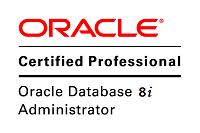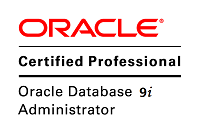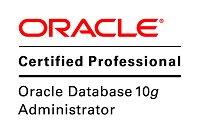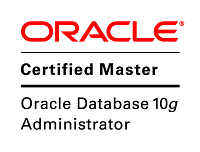升级到11.2.0.4的一些发现-1-catupgrd.sql大致解读
升级到11.2.0.4的一些发现-3-catalog.sql的主要内容
1,如果当前连接的用户不是SYS,那么会报ORA-01722: invalid number错误:
SQL> conn / as sysdba
Connected.
SQL> show user
USER is "SYS"
SQL> SELECT TO_NUMBER('MUST_BE_AS_SYSDBA') FROM DUAL
2 WHERE USER != 'SYS';
no rows selected
SQL> conn lunar/lunar
Connected.
SQL> show user
USER is "LUNAR"
SQL> SELECT TO_NUMBER('MUST_BE_AS_SYSDBA') FROM DUAL
2 WHERE USER != 'SYS';
SELECT TO_NUMBER('MUST_BE_AS_SYSDBA') FROM DUAL
*
ERROR at line 1:
ORA-01722: invalid number
SQL>
那么判断是否当前连接用户为LUNAR,就可以使用下面的语句:
SQL> conn lunar/lunar
Connected.
SQL> show user
USER is "LUNAR"
SQL> SELECT TO_NUMBER('MUST_BE_AS_LUNAR') FROM DUAL
2 WHERE USER != 'LUNAR';
no rows selected
SQL>
SQL>
同样道理,判断当前数据库版本是否为11.2.0.4:
SQL> SELECT TO_NUMBER('MUST_BE_11_2_0_3') FROM v$instance
2 WHERE substr(version,1,8) != '11.2.0.4';
no rows selected
SQL>
2,利用11.2 的新特性,记录SQLPLUS错误日志:
CREATE TABLE sys.registry$error(username VARCHAR(256),
timestamp TIMESTAMP,
script VARCHAR(1024),
identifier VARCHAR(256),
message CLOB,
statement CLOB);
DELETE FROM sys.registry$error;
set errorlogging on table sys.registry$error identifier 'RDBMS';
commit;
然后,通过下面的命令查看sqlplus的错误日志:
col timestamp format a15
col username format a15
col script format a10
col identifier format a15
col statement format a20
col message format a20
select * from REGISTRY$ERROR;
SQL> CREATE TABLE LUNAR.registry$error(username VARCHAR(256),
2 timestamp TIMESTAMP,
3 script VARCHAR(1024),
4 identifier VARCHAR(256),
5 message CLOB,
6 statement CLOB);
Table created.
SQL> DELETE FROM LUNAR.registry$error;
0 rows deleted.
SQL> set errorlogging on table LUNAR.registry$error identifier 'RDBMS';
SQL> COMMIT;
Commit complete.
SQL> conn lunar/lunar
Connected.
SQL> select * from REGISTRY$ERROR;
no rows selected
SQL> insert into REGISTRY$ERROR as select * from dba_users;
insert into REGISTRY$ERROR as select * from dba_users
*
ERROR at line 1:
ORA-00926: missing VALUES keyword
SQL> select count(*) from REGISTRY$ERROR;
COUNT(*)
----------
0
SQL>
这里我们看到,并没有记录下来sqlplus的操作错误,仔细看一下,原来set errorlogging on table命令必须在当前用户下执行,例如:
SQL> set errorlogging on table LUNAR.registry$error ;
SQL> insert into REGISTRY$ERROR as select * from dba_users;
insert into REGISTRY$ERROR as select * from dba_users
*
ERROR at line 1:
ORA-00926: missing VALUES keyword
SQL> set linesize 167
SQL> set pages 999
SQL> col timestamp format a15
SQL> col username format a15
SQL> col script format a10
SQL> col identifier format a15
SQL> col statement format a20
SQL> col message format a20
SQL> select * from REGISTRY$ERROR;
USERNAME TIMESTAMP SCRIPT IDENTIFIER MESSAGE STATEMENT
--------------- --------------- ---------- --------------- -------------------- --------------------
LUNAR 03-AUG-14 05.45 ORA-00926: missing V insert into REGISTRY
.13.000000 PM ALUES keyword $ERROR as select * f
rom dba_users
LUNAR 03-AUG-14 05.50 SP2-0042: unknown co g
.25.000000 PM mmand "g" - rest of
line ignored.
SQL>
看,错误信息,一目了然
3, auto-bulkification by setting event 10933
Bug:6275368 PL/SQL FOR UPDATE cursor may be positioned on wrong row
Component: RDBMS
Fixed Ver(s): 10205 11107 112
Symptom(s):
- If a FOR LOOP iterates over a cursor declared in a different package, auto-bulkification occurs. This
may be inappropriate if the cursor's SQL statement (which would appear in the package body) contains
a FOR UPDATE clause as the "CURRENT OF" may then be incorrect.
Available Workaround(s):
Manually turn off auto-bulkification by setting event 10933, level 16384
and recompiling affected library units.
4,catupgrd.sql会调用catupstr.sql, 这个脚本执行过程中中,还需要依次调用:
catupses.sql
i0902000.sql——重整 props$,dependency$,mon_mods$。之后,该脚本还调用i1001000.sql。i1001000调用i1002000.sql。
在i1002000.sql有有一个有意思的操作:
Rem clear 0×00200000 (read-only table flag) in trigflag during upgrade
update tab$ set trigflag = trigflag – 2097152
where bitand(trigflag, 2097152) <> 0;
commit;
— 0×00200000转换成10进制是2097152
—-bitand,顾名思义,就是按位与操作,即:
SQL> select bitand(1,0) from dual;
BITAND(1,0)
-----------
0
1 row selected.
SQL> select bitand(0,1) from dual ;
BITAND(0,1)
-----------
0
1 row selected.
SQL> select bitand(1,1) from dual ;
BITAND(1,1)
-----------
1
1 row selected.
SQL>
SQL> select bitand(trigflag, 2097152) ,trigflag,count(*) from tab$ group by bitand(trigflag, 2097152) ,trigflag;
BITAND(TRIGFLAG,2097152) TRIGFLAG COUNT(*)
------------------------ ---------- ----------
0 201326592 18
0 0 1957
2 rows selected.
SQL>
SQL> alter session set nls_date_format='yyyy-mm-dd hh24:mi:ss';
Session altered.
select object_id,SUBOBJECT_NAME,object_name,CREATED,LAST_DDL_TIME,STATUS from dba_objects
where object_id in(select obj# from tab$ where TRIGFLAG=201326592) order by object_id ;
SQL> select object_id,SUBOBJECT_NAME,object_name,CREATED,LAST_DDL_TIME,STATUS from






